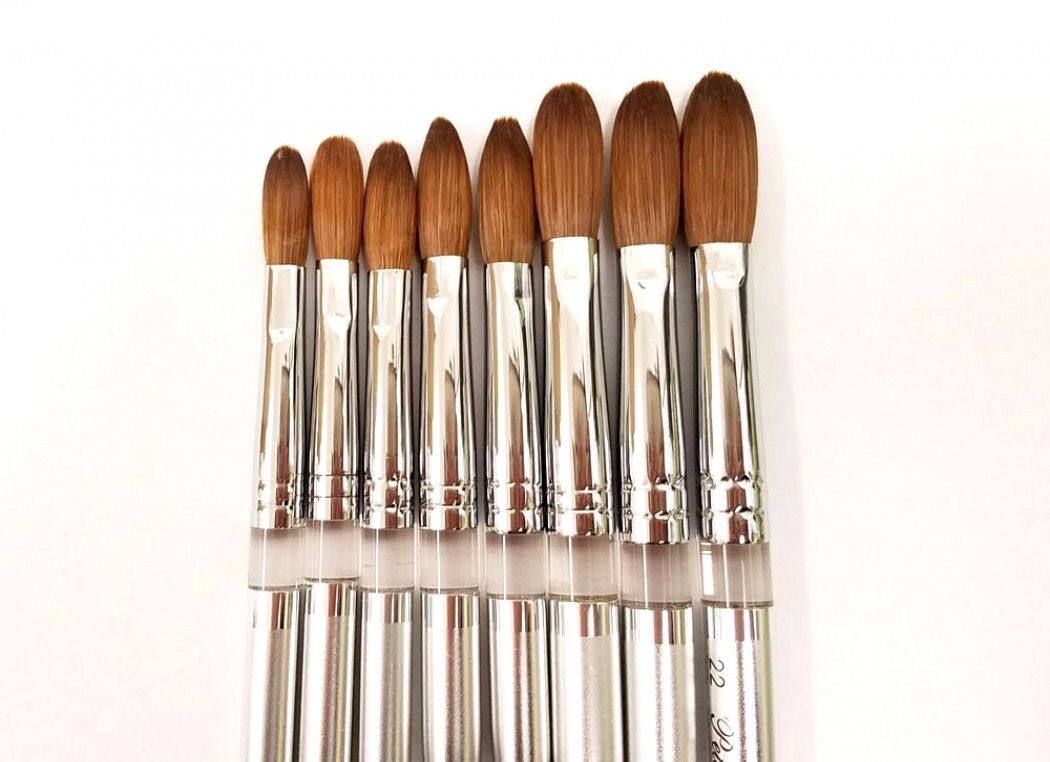Paintbrushes for Acrylics

Do you have any struggles with picking up acrylic brushes?
Here`s some tips for you!
Let’s talk about what we need to look for when choosing acrylic brush.
Handler
Acrylic brushes can have different handles:
· Wooden
· Plastic
· Metallic
Metallic handles are the most expensive to produce that’s why it usually increases the cost of the brush.
Wooden ones are more affordable but keep in mind that they can absorb the monomer if you keep your brush on the tissue saturated with the monomer.
If it happened, you will need to buff the brush and seal it with the top coat.
Size
Acrylic brushes usually have even numbers 2, 4 ,6 and so on.
Sizes between 0 and 6 are usually for nail art, while size 6 and bigger is perfect for nail sculpting.
If you’re just getting started, I strongly recommend to choose size 6 or 8. It will help you to pick up less monomer and practice picking up perfect acrylic pearls.
Sizes 10, 12, 14 are suitable for experienced nail techs. Let’s say if you don’t have any problems of picking up the acrylic bead, it will work for you.
Bigger size means there are more bristles in the brush. Hence, you can pick up more monomer and bigger acrylic bead. They will work for creating longer nails, stilettos, extreme shapes.
Caring for your brushes
Did you know that if you take a proper care of your brush it can serve you for years? These tips will help you to extend the life of your brush.
#1 Never ever, use acetone or brush cleaners to clean it. I repeat. Never soak it in acetone. Acetone will dry up the bristles and they will never come back together.
#2 Washing brush in water or with soap is also a bad idea. Don’t do that too.
#3 Use clean monomer to clean your brush. You can buy an affordable one so you won’t need to spend a good one for it.
#4 Use smooth tissues without any colours or patterns on it. Kleenex are pretty good by the way.
#5 store your brush flat and use a lid or any other protective cap. Make sure that the bristles won’t be hitting something all the time.
#6 If you’re using a cap for the brush, make sure there’s a hole in it for the ventilation
#7 Shower and bath you brush in the monomer each time you’re done working.
Clean it in a slightly twisted motion of your hand.
Do you have a favorite acrylic paint brush that you use the most?
Share your thoughts & ask away in the comments section below!

please authorize